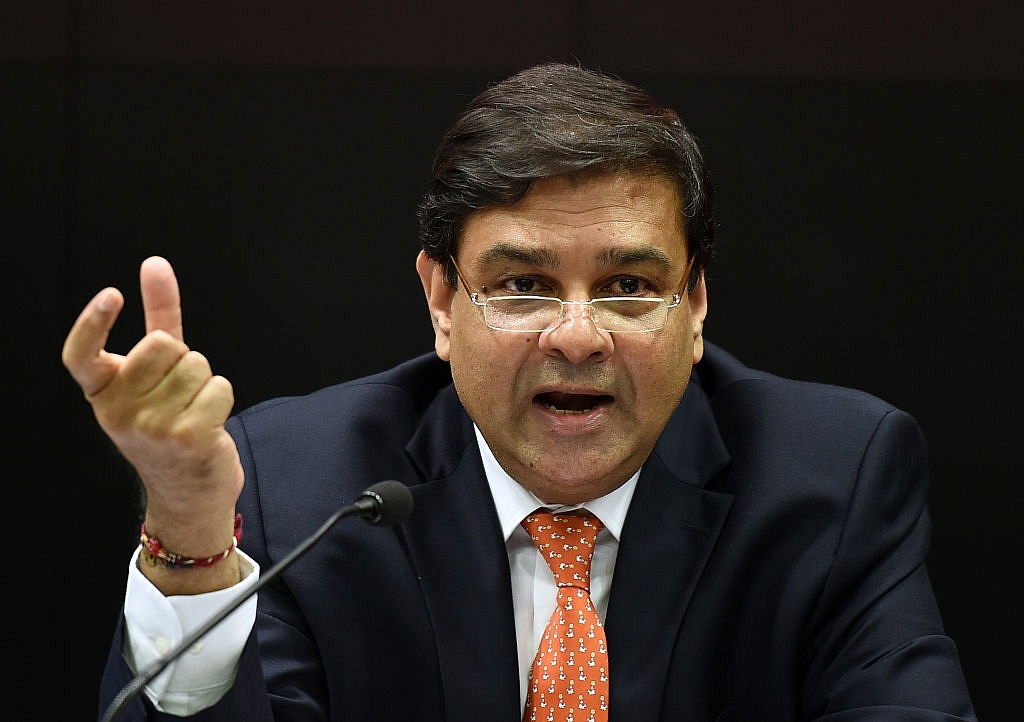Business
A Rate Cut Is A Rate Cut, Not A Magic Spell To Revive Growth
- An investment revival is unlikely before the last quarter of this fiscal.
- The revival hopes stemming from the RBI rate cut are justified but need to be checked, lest the expectations turn unreal.

Dr Urjit Patel (PUNIT PARANJPE/AFP/Getty Images)
So the Reserve Bank of India (RBI) has taken the first step towards monetary easing, with a 25 basis point cut in the policy rate. There has been general exultation about this – despite sober reactions from the government’s economic managers - almost as if this alone is going to push gross domestic product (GDP) growth to above 8 per cent this fiscal. A reality check is, therefore, in order.
First, there’s the crucial issue of transmission of the rate cuts by the banks. Both the RBI governor Urjit Patel and the finance secretary Ashok Lavasa were questioned about this and both said they `hoped’ the banks would pass on the reductions. But that has been said by every RBI governor whenever he has cut rates and that has had little impact on the banks.
According to a note by India Ratings and Research, while the policy rate has been reduced by 150 basis points since January 2015 (not including the present rate cut) , only 40 per cent of this has been transmitted by public sector banks. It was the private sector banks, it pointed out, which reduced the marginal cost of lending rate for one year by 25 basis points after the policy rate cut to the same extent in April 2016.
Second, even if banks do bring down interest rates, companies are not going to rush to invest in expanding capacities. It is not as if interest rates alone were keeping companies from investing. The large companies were tapping corporate bond markets and borrowing from overseas for their needs. Besides, these companies were able to use their clout to get lower interest rates. It is actually the small and medium enterprises who were not benefiting from the lack of transmission of policy rate cuts.
The policy rate cut will certainly lead to a marginal reduction in the interest burden on existing borrowings and improve profitability of companies, says economist S. S. Bhandare, but it will serve more as a psychological boost than getting the investment cycle going. There are two factors that will still hold back investments by large companies.
One, many companies still have highly leveraged balance sheets and are just not inclined to borrow more. An India Ratings and Research note in August, Economy in Motion, But Growth not Accelerating, had pointed out that 240 of the top 500 borrowers belong to the stressed and elevated risk of refinancing categories and will remain so through this fiscal.
Two, in any case, companies are not producing to full capacity, so they are hardly likely to invest in creating additional capacity. The RBI’s latest quarterly OBICUS (order books, inventories and capacity utilisation survey) shows a dip in overall capacity utilisation in the first quarter (Q1 or April-June) of this fiscal to 72.9 per cent from 74 per cent in the last quarter (Q4 or January-March) of 2015-16.
The RBI’s Monetary Policy Report also refers to this and also points out that in the lacklustre investment climate, new investment intentions have slowed down by 19 per cent in the second quarter (Q2 or July-September) of this fiscal over Q2 of the last fiscal.
What of the future? Things are beginning to look up in some sectors. Activity is picking up in the defence sector and electronics clusters, says Siddhartha Roy, economic advisor to the Tata group, but cautions that these are not areas that absorb a lot of capacity. What is needed, he says, is a huge demand from the infrastructure sector (for steel, cement etc.) and from the consumer goods sector.
The former will come from a number of large stalled projects that are being put on track. According to the Monetary Policy Report, 65 projects worth Rs 3.05 trillion were cleared in the April-September period and most of these are in the roads, power, coal and petroleum sectors. The latter will come from a likely spurt in urban and rural demand thanks to the Seventh Pay Commission award and the nascent agricultural revival.
But it’s hard to be definitive about this. Big projects may have been cleared but it may take time for this to translate into action on the ground. Besides, the infrastructure sector companies are also the most financially stressed. For now, industry will have to look only to consumer demand for a boost.
From all accounts, it does not look as if an investment revival will happen before the last quarter of this fiscal, if nothing goes wrong. So it’s best if popular opinion tempered its expectations a bit.
Support Swarajya's 50 Ground Reports Project & Sponsor A Story
Every general election Swarajya does a 50 ground reports project.
Aimed only at serious readers and those who appreciate the nuances of political undercurrents, the project provides a sense of India's electoral landscape. As you know, these reports are produced after considerable investment of travel, time and effort on the ground.
This time too we've kicked off the project in style and have covered over 30 constituencies already. If you're someone who appreciates such work and have enjoyed our coverage please consider sponsoring a ground report for just Rs 2999 to Rs 19,999 - it goes a long way in helping us produce more quality reportage.
You can also back this project by becoming a subscriber for as little as Rs 999 - so do click on this links and choose a plan that suits you and back us.
Click below to contribute.
Latest